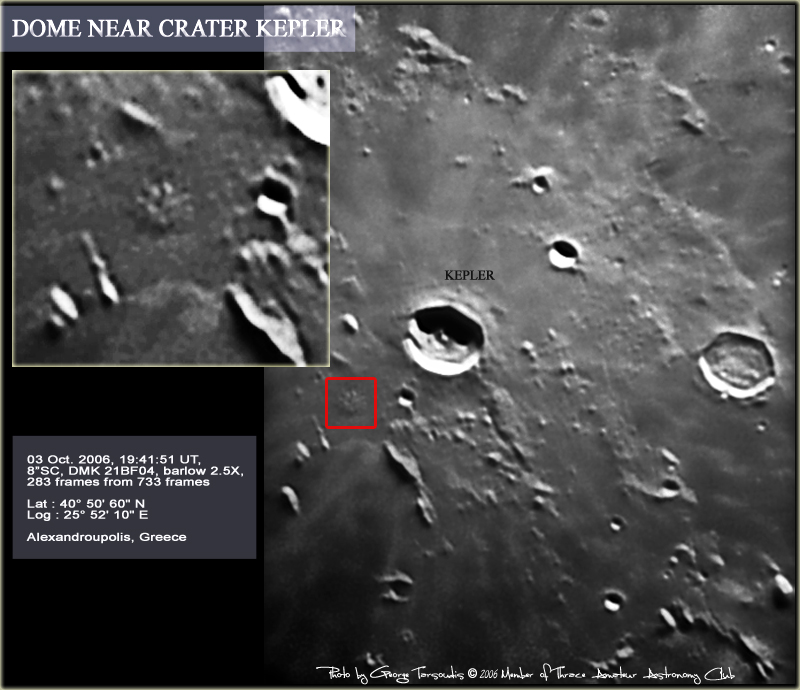
image by George Tarsoudis, Alexandroupolis, Greece
When is a mound a dome? George has identified a relatively hemispherical bump just northwest of Kepler (north to the left) and wonders if it may be a dome, but comments, Usually domes have more sweet surface??? This feature certainly doesn’t have a sweet surface. It seems to have a couple of peaks sticking through as well as two possible craters. Most normal domes are made of mare lava and have smooth surfaces. This area is completely covered by Kepler’s bright rays and can not be determined to be dark like maria or bright like some of the nearby hilly material. This feature has been noted before and is shown on the dome map of the Geological Lunar Research Group. A Consolidated Lunar Atlas print also shows it as a likely dome, but a rough textured one. So is it a dome? I don’t know, but it seems unlikely. One reason for being doubtful is its craters and textured terrains that are somewhat uncommon on normal domes.
Technical Details:
Oct 3, 2006. Details on image.
Related Links:
Rükl plate 30
George’s website
Lunar Orbiter IV view
Yesterday's LPOD: A Very Strange Crater
Tomorrow's LPOD: A Skating Rink with Bumps
COMMENTS?
Register, Log in, and join in the comments.



